Image Archive





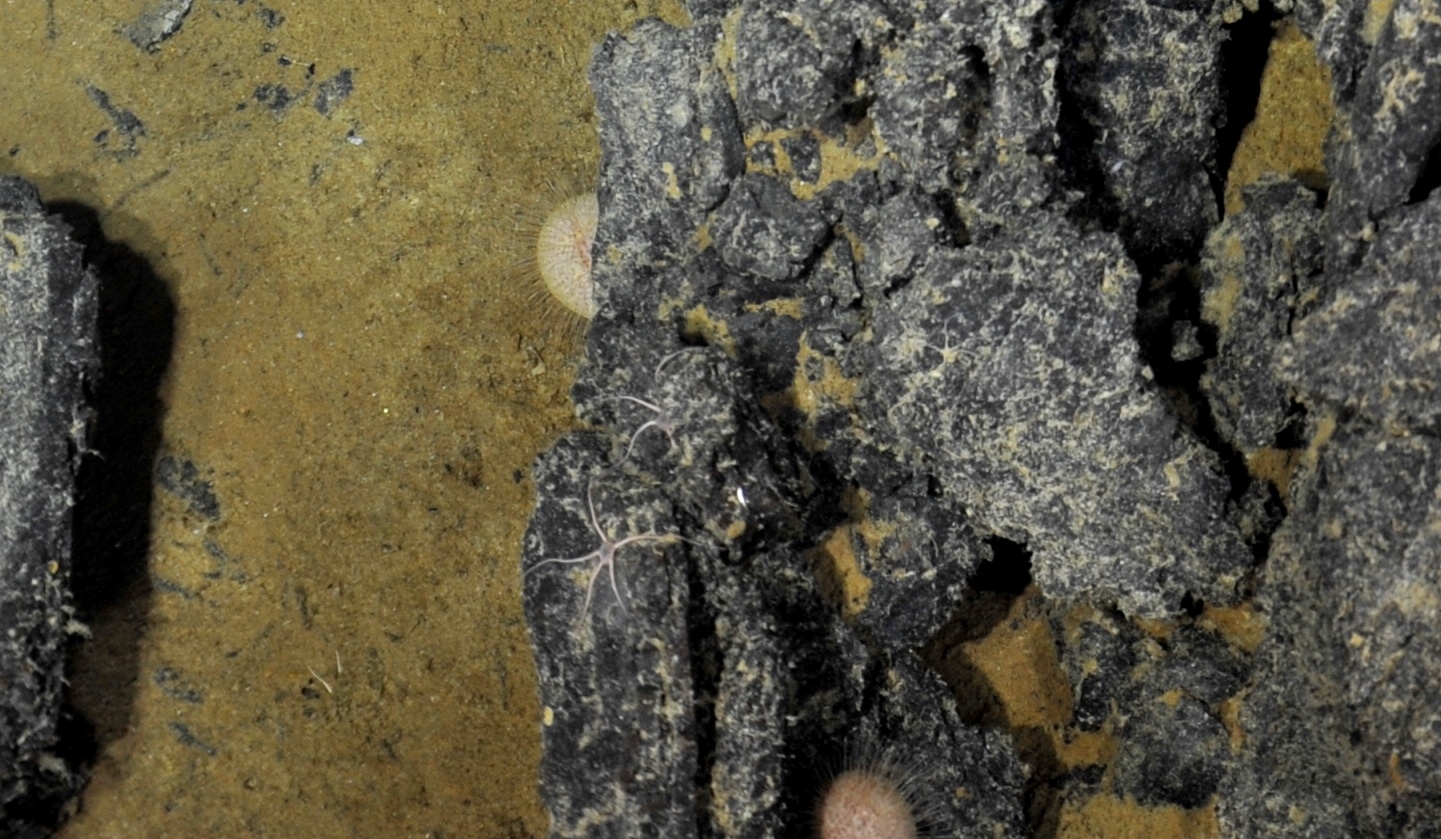
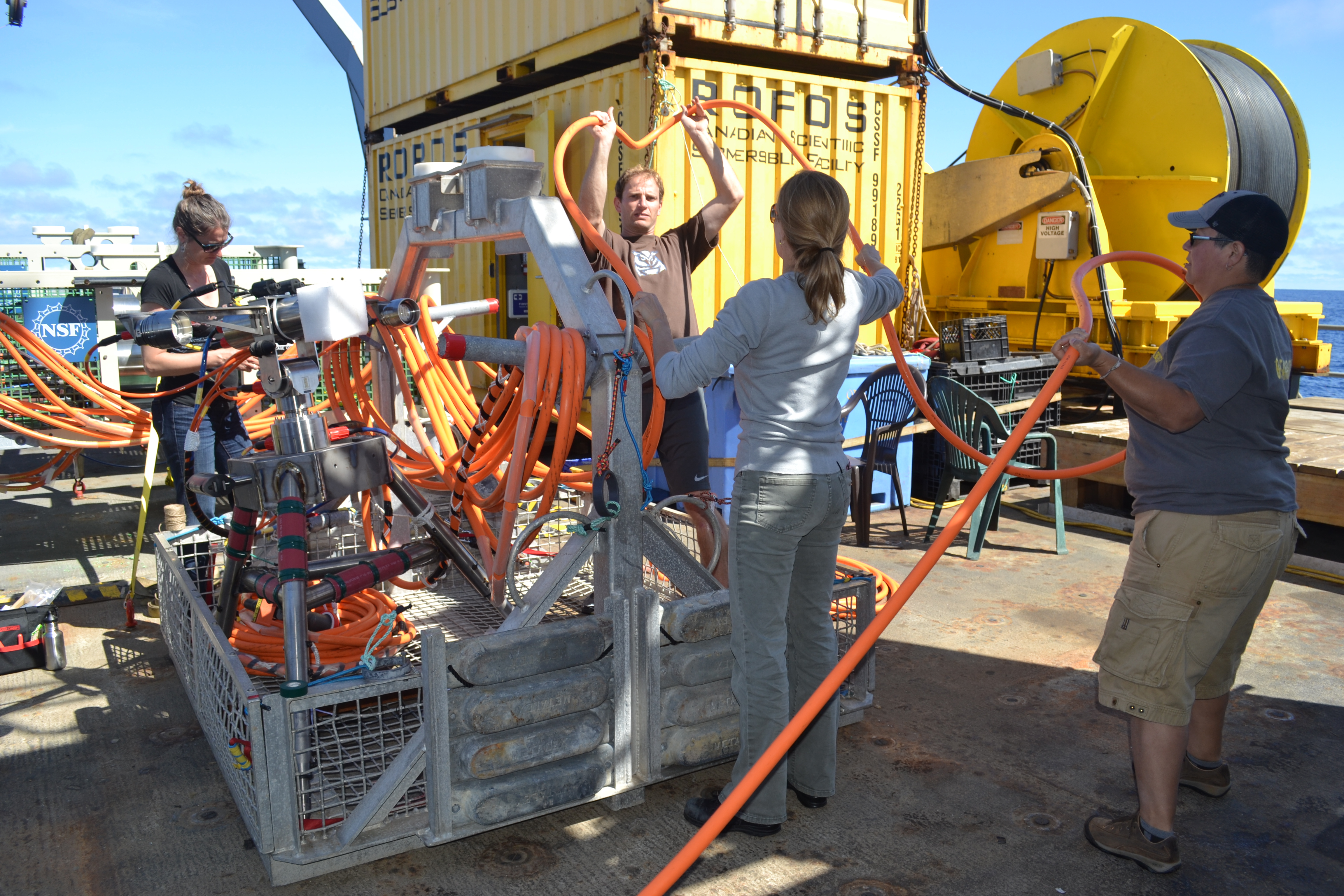


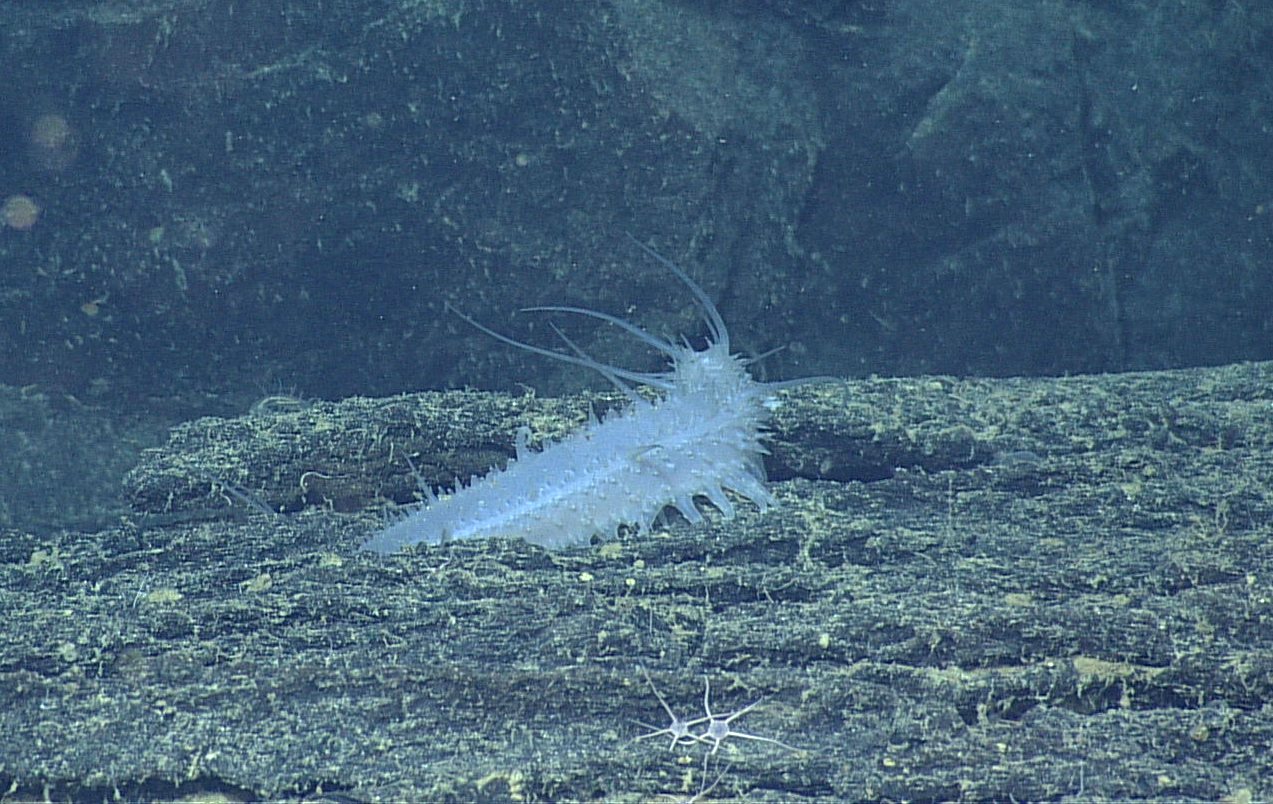
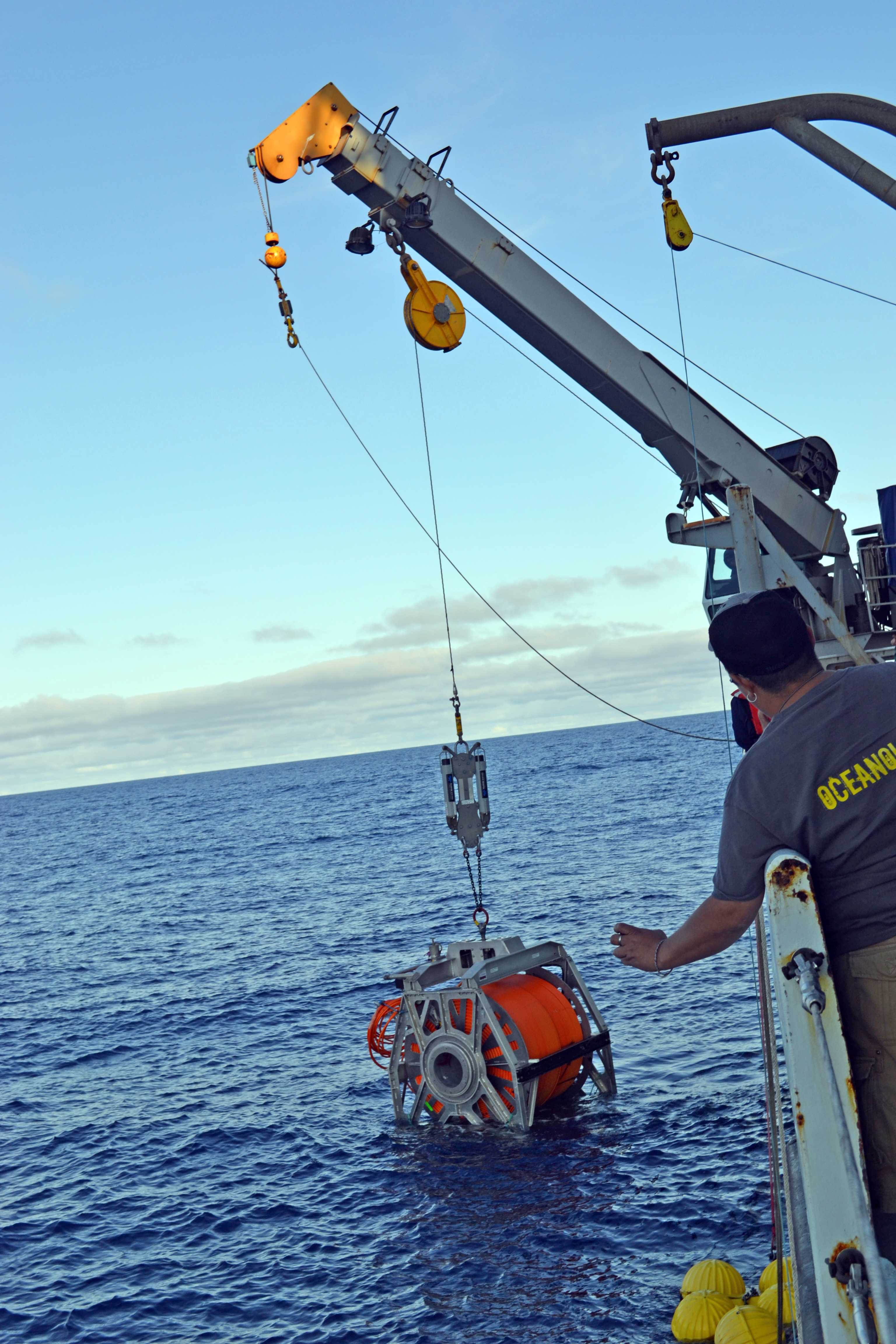


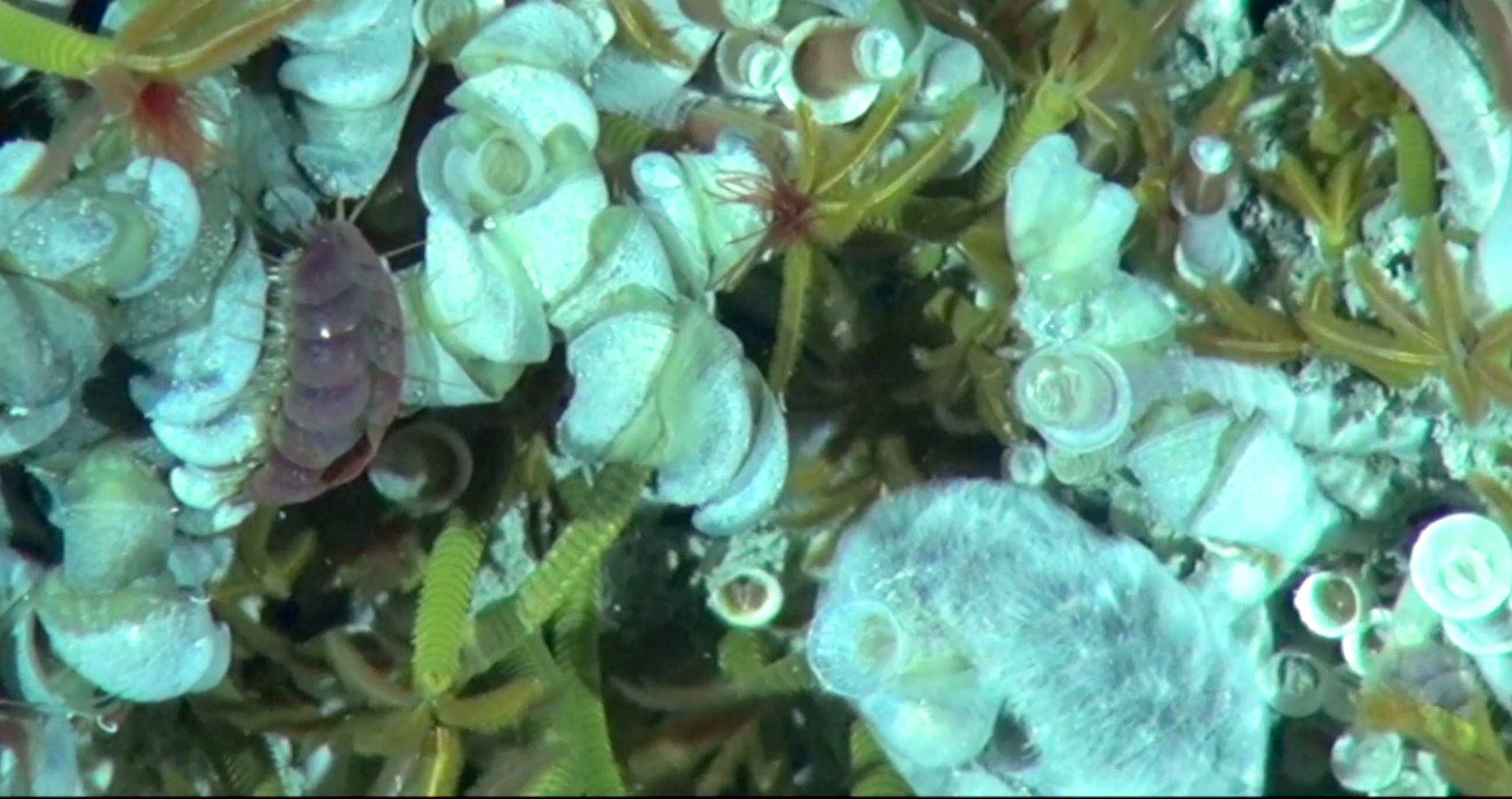








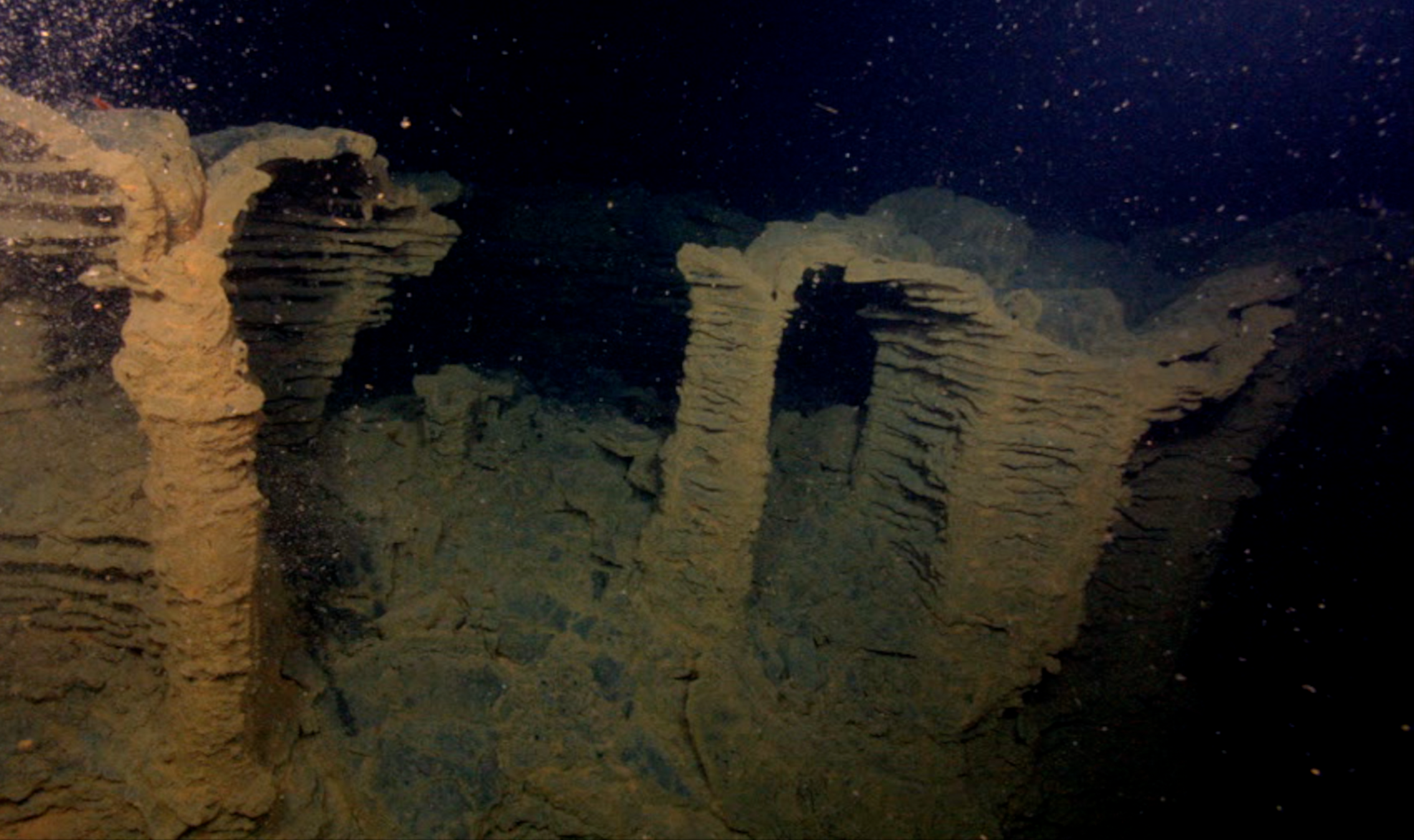



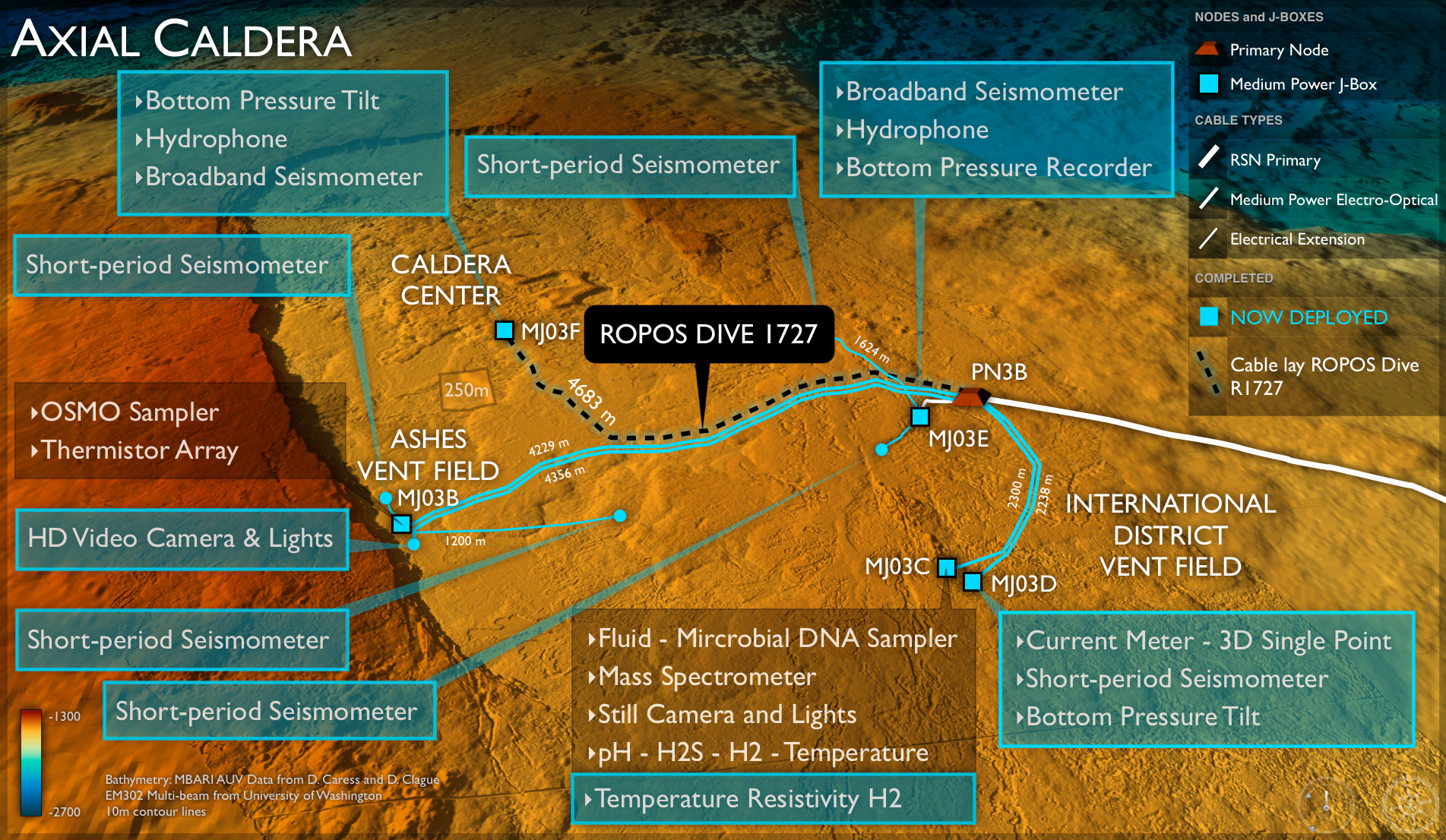

This species is not yet identified, although it may also be Spinophiura jolliveti. It is the dominant brittle star at the base of Axial. Photo credit: NSF-OOI/UW/CSSF; R600; V13

Hundreds of Spinophiura brittle stars can be found clinging to nearly all lava flows within Axial Seamount's caldera. Photo credit: NSF-OOI/UW/CSSF; Dive R1635; V13

A deep-sea octopus ignores ROPOS at the Escargot hydrothermal vent in the International District vent field at the summit of Axial Seamount. Credit: UW/NSF-OOI/CSSF; ROPOS Dive R1723; V14.

A rear view of the Spider Crab Macroregonic macrochira at Axial Seamount. Photo credit: NSF-OOI/UW/CSSF; Dive R1727; V14

The spider crab Macroregonic macrochira is very common at Axial Seamount. Credit:UW/NSF-OOI/CSSF; ROPOS Dive R1727; V14.

There are likely to be many sea urchins hiding beneath the vast lava rock fields at Axial.Here, several of the Unknown Sea Urchin 1 variety are shown. Photo credit: NSF-OOI/UW/CSSF; Dive R1724; V14

The integrated team of UW School of Oceanography Science (Giora Proskurowski), APL- Engineering (Dana Manalang and Trina Litchendorf), and undergraduate student (Christina Ramirez) help ready the digital-still camera for installation in the International District Hydrothermal Field. Photo Credit, Mitch Elend, University of Washington; V14.
Seastars (Class Asteroidea) and Brittle Stars (Class Ophiuroidea) belong to Phylum Echinodermata. Photo credit: NSF-OOI/UW/CSSF; Dive R1727; V14

The ROCLS cable drum a few meters above the seafloor as it is being lowered by the R/V Thompson's trawl wire. The drum contains >15,000 feet of extension cable. Photo credit: NSF-OOI/UW/CSSF; Dive 1727; V14.

Brittle stars (Ophiuroids) are found everywhere on Axial. This species (center) may be different from the much more common Spinophiura jolliveti. Photo credit: NSF-OOI/UW/CSSF; Dive R1727; V14

Another Deep-Sea Cucumber (perhaps Pannychia moseleyi) poses for a close-up at Axial Seamount. Photo credit: NSF-OOI/UW/CSSF; Dive R1727; V14

The ROCLS cable drum with >8000 ft of electro-optical cable is lowered on the R/V Thompsons trawl wire for deployment near PN3B. ROPOS will launch shortly, and acquire the drum with a sonar at ~ 600 ft beneath the surface. Near bottom, an acoustic release will free the drum to rest gently on the seafloor so that ROPOS can latch into it and begin the cable installation at Axial Summit. Photo credit: Mitch Elend, University of Washington, V14.

Giora Proskurowski, a Project Scientist with the UW RSN Team, prepares a Remote Access Fluid Sampler (front) and microbial DNA sampler for installation in a diffuse flow site at the vent called 'El Gordo' in the International District hydrothermal field. The instrument is designed by Dr. David Butterfiled and NOAA-PMEL and the UW. Image Credit: Mitch Elend, University of Washington; V14.

This Deep-Sea cucumber (Holothurian) is likely of the genus Pannychia, possibly Pannychia moseleyi. Photo credit: NSF-OOI/UW/CSSF; Dive R1724; V14

Two scaleworms roam among the Palm worms and limpets at Mushroom, one of the hydrothermal vents at ASHES vent field on Axial Seamount. One worm shows its usual pinkish red color (at left), while the other is coated with a fur-like layer of filamentous bacteria. This image was taken with the RCA HD Video Camera during its test on the seafloor during VISIONS 13. Credit: UW/NSF-OOI, V14

Keith Shepherd, ROPOS Operations Manager, and ROPOS Pilot Kim Wallace, guide the R/V Thompson into position to deploy the ROCLS drum onto the seafloor at 5000 ft water depth to begin installation of the 4.6 km extension cable. ROPOS later will latch into the ROCLS drum and begin the cable lay. Photo credit: Mitch Elend, University of Washington, V14.

ROCLS with 4.7 km of extension cable, which was laid on Axial, from Primary Node PN3B to the Central Caldera. Photo credit: Christina Ramirez, University of Washington, V14.

The broadband seismometer (left) and low frequency hydrophone (right) are installed on the floor of Axial Seamount at the Central Caldera Site. The 7-function manipulator of ROPOS is connecting the extension cable to the medium powered junction box. The white bags inssulate the broadband from acoustic "noise" associated with curents flowing over the instrument.

A holothurian Deep Sea Cucumber (possibly of Genus Pannychia) at 5000 ft is surrounded by brittle stars and a sea spider (bottom right). Photo credit: NSF-OOI/UW/CSSF; Dive R1727; V14.

Skip Denny's dragon brought good luck on a ROCLS cable installation during VISIONS'14. Photo Credit: Debbie Kelley, University of Washington; V14.

Sea cucumbers (Phylum Echinoderm, Class Holothuria) are common in the sediments at the base of Axial Seamount. This one is an unknown species of the genus Peniagone. Photo credit: NSF-OOI/UW/CSSF; Dive R1715; V14

This Big Red Jelly (Tiburonia granrojo) seemed to be inspecting ROPOS' camera. Photo credit: NSF-OOI/UW/CSSF; V14

A Seastar on a sheet flow at Axial Seamount. Credit: UW/NSF-OOI/CSSF; ROPOS Dive R1724; V14.

Huge, cavernous lava ponds occur throughout areas of Axial Seamount; When the roof of a lava pond collapses, pillar structures that were formed are visible. Credit: UW/NSF-OOI/Cssf; V14.

Coming soon to a network near you! Image credit: Christina Ramirez, University of Washington, V14.

Meet the star of the VISIONS '14 movie, the robotic vehicle ROPOS - powerhouse of the operations during VISIONS 14. Photo credit: Christina Ramirez, University of Washington, V14.

Finding a quiet place on a busy ship to record a voice-over for video isn't easy. Here, UW students Sam Albertson, Katie Bigham and Jesse Turner work in the ship's hold. Photo credit: Gina Hansen, University of Washington, V14

Axial Caldera ROPOS Dive 1727
- Anemone
- Animal
- Arthropod
- ASHES
- Axial
- Axial Base
- Axial Biology
- Axial Caldera
- Bacteria
- Basalt Lava
- BEP
- Biofouling
- biolgoy
- Biology
- Camds
- Camera
- Camhd
- Central Caldera
- Ciliates
- Cnidaria
- Coastal Biology
- Crab
- Deep Profiler Mooring
- Dive Highlights
- Eastern Caldera
- Echinoderms
- Endurance Array
- Engineering Team
- ENLIGHTEN 10
- Exploratorium
- Fish
- Geology
- HD Camera
- HPIES
- Hydrate Ridge
- Hydrates
- Hydrophone
- Hydrothermal Vents
- Illustration
- Inshore 80 Meters
- Instrument
- International District
- J-BOX
- Jason
- Jellyfish
- Junction Box
- K12
- Lava
- Mollusk
- Moorings
- Nodes
- Nudibranch
- Octopus
- OOI
- Oregon Offshore
- Oregon Offshore 600 m
- Oregon Shelf
- Oregon Slope Base
- People
- PN1B
- PN1D
- Polychaetes
- PPSDN
- Primary Node
- RASFL
- ROCLS
- ROPOS
- ROPOS Dives
- ROV Team
- RV Revelle
- RV Sikuliaq
- RV Thompson
- Salp
- Sample
- SC13
- Science Team
- Sea Cucumber
- Sea Star
- Sea Urchin
- Seafloor
- Seismometer
- Sensors
- Shallow Profiler Mooring
- Shark
- Shipboard
- Shore Station
- Slope Base
- Smoker
- Soft Coral
- Southern Hydrate Ridge
- Sponge
- Squid
- Students
- Students & Guest Participants
- Tmpsf
- Tubeworms
- VISIONS 11 Leg 1
- VISIONS 11 Leg 2
- VISIONS 11 Viewers
- VISIONS 13
- VISIONS 14
- VISIONS 15
- VISIONS 16
- VISIONS 17
- VISIONS 18
- VISIONS 20
- VISIONS 22
- VISIONS 23
- Visualization
